COVID-19 GLOBAL EPIDEMIC UPDATE
- As of March 24, 2020 there have been around 420,000 confirmed cases of COVID-19 (often referred to as “coronavirus“) officially registered across 195 countries, of which 297,000 are still active, and around 19,000 deaths. On March 11, WHO declared the virus a pandemic, which means it is spreading globally in an uncontrolled manner.
- The highest numbers of registered cases are in China, Italy, the US, Spain, Germany, Iran, France, Switzerland, South Korea, and the UK. However, the accuracy of the figures is highly dependent on local conditions including the availability of testing kits and the stringency of testing criteria.
- This is a genuinely novel situation, both as a global health crisis and as a macroeconomic shock. It is therefore difficult to accurately predict any of the impacts, even relatively short-term ones. However, there is a range of factors that are worth considering to determine the likely range of impacts.
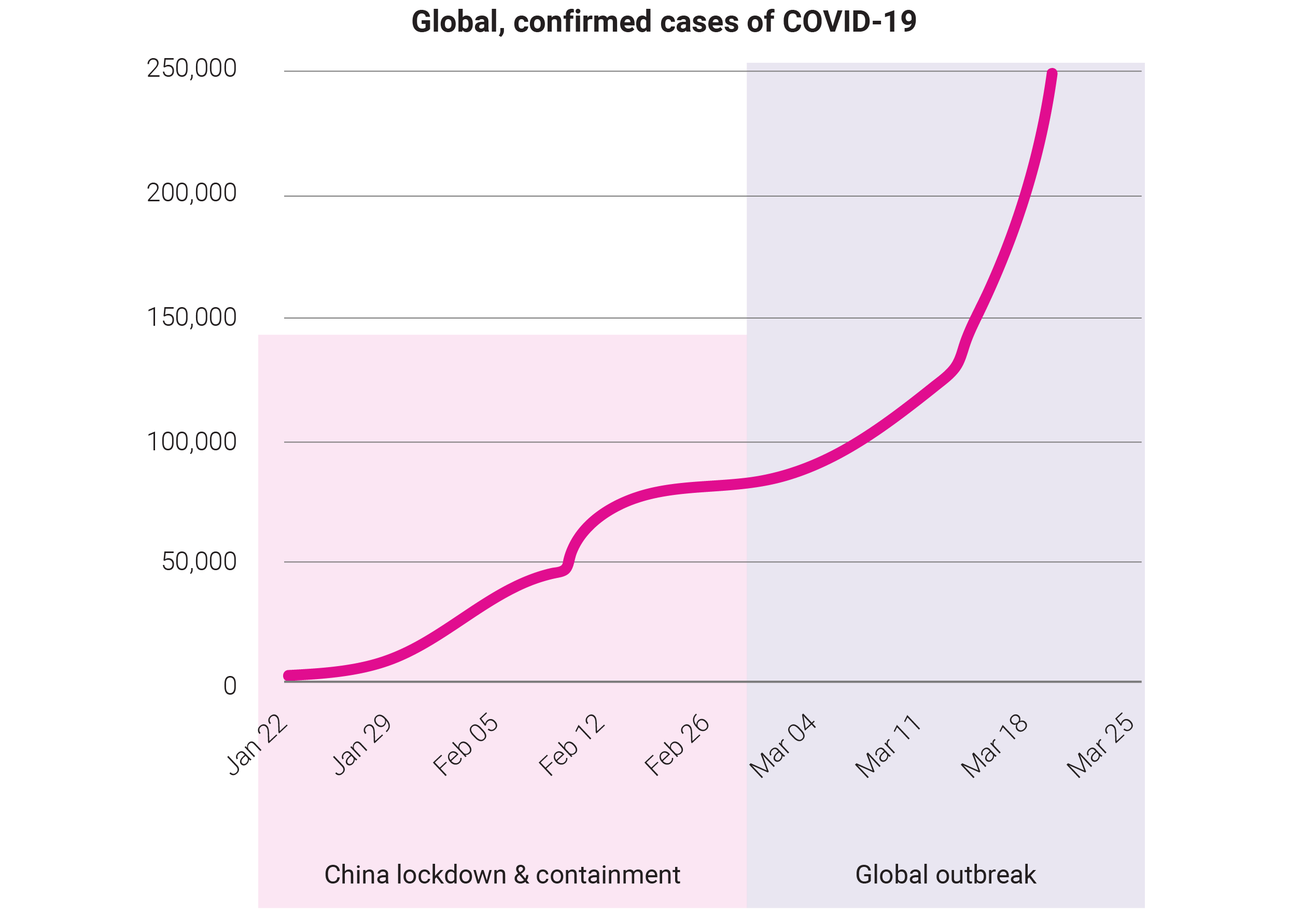
Source: Worldometers.info
MOST COUNTRIES ARE NOT CAPTURING THE FULL EXTENT OF THE PANDEMIC YET
- With the exception of in mainland China, Hong Kong, Japan, Korea, Singapore, and Taiwan there is a significantly lower level of testing, contact tracing, and containment practices than required to achieve visibility of the entire outbreak. This means that most governments do not yet know the full extent or likely progression of the outbreak.
- Crucially, China and Korea found that around 60–80% of COVID-19 transmissions occur in the asymptomatic phase (before symptoms appear), which lasts for five to seven days. This means that focusing containment and treatment on symptomatic cases does not limit further transmission and that the extent of transmission is not visible for one to two weeks. Without containment measures, this lag in visibility of actual cases means cases will continue to grow exponentially until the pandemic has run its course or containment measures are put in place.
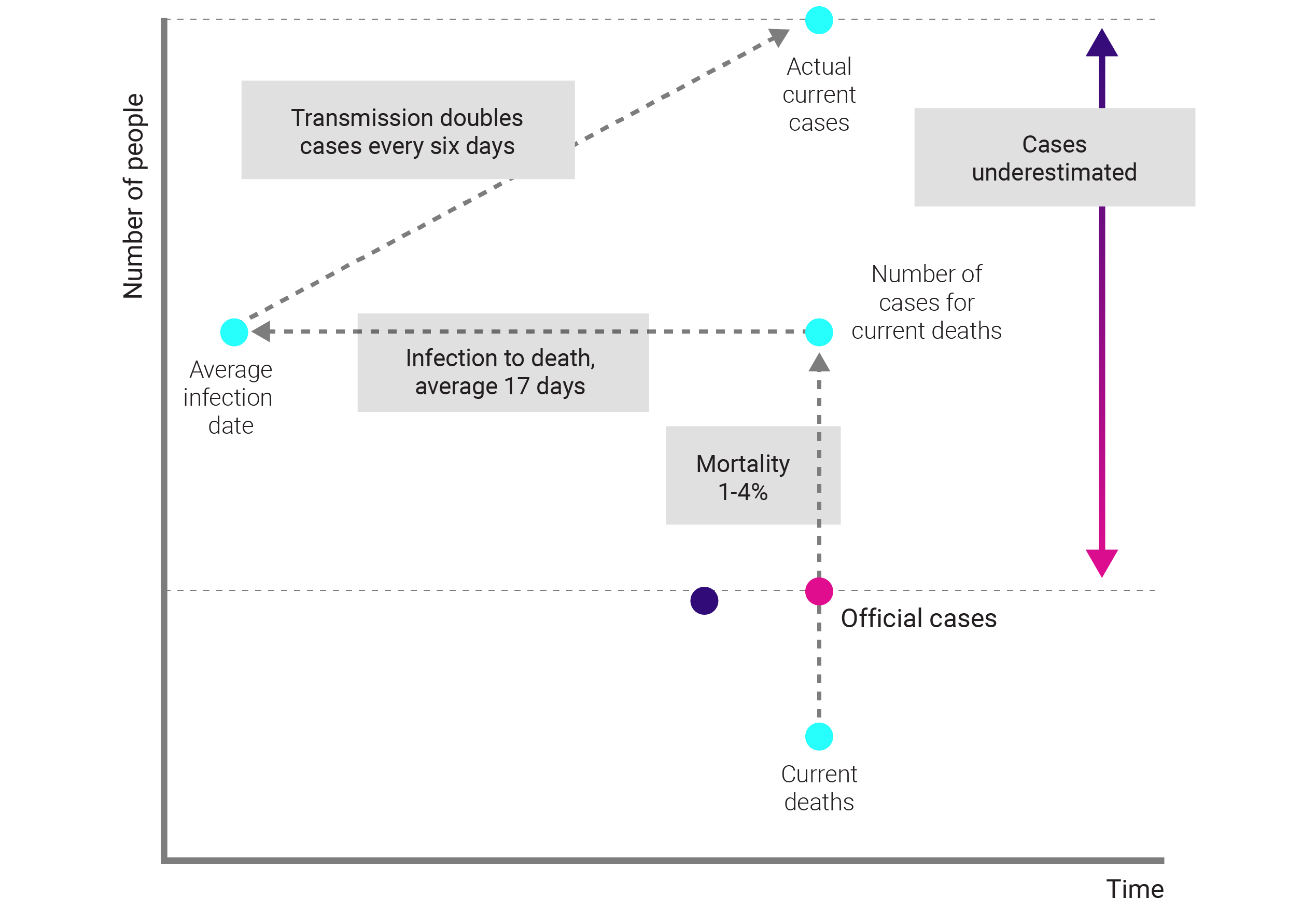
Source: Center for Systems Science and Engineering, Johns Hopkins University (2020) Coronavirus COVID-19 Global Cases. Available at www.worldometers.info/coronavirus/; https://github.com/CSSEGISandData/COVID-19; https://medium.com/@tomaspueyo/coronavirus-act-today-or-people-will-die-f4d3d9cd99ca
ECONOMIC IMPACT WILL BE FELT IN SEVERAL PHASES, CULMINATING IN A RECESSION
The likely impacts of the COVID-19 pandemic on the global economy will come in three phases:
- Initial supply and demand shock: supply restriction because of a lack of labor and closed workplaces; demand shock due to consumer fear
- Containment: government-mandated restrictions that mostly further reduce demand by restricting travel and closing businesses and public spaces; this will be directly moderated by government decisions and responses
- Recessionary pressures: further demand reduction due to loss of jobs, income, and spending power. Governments and central banks will try to offset some of the worst recessionary impacts. Importantly, how governments mitigate lost personal income and pressure on companies to make redundancies will have a critical impact on how this plays out in the next months and how long the slowdown lasts.
GDP Growth Projection
% year on year, 2019 and 2020
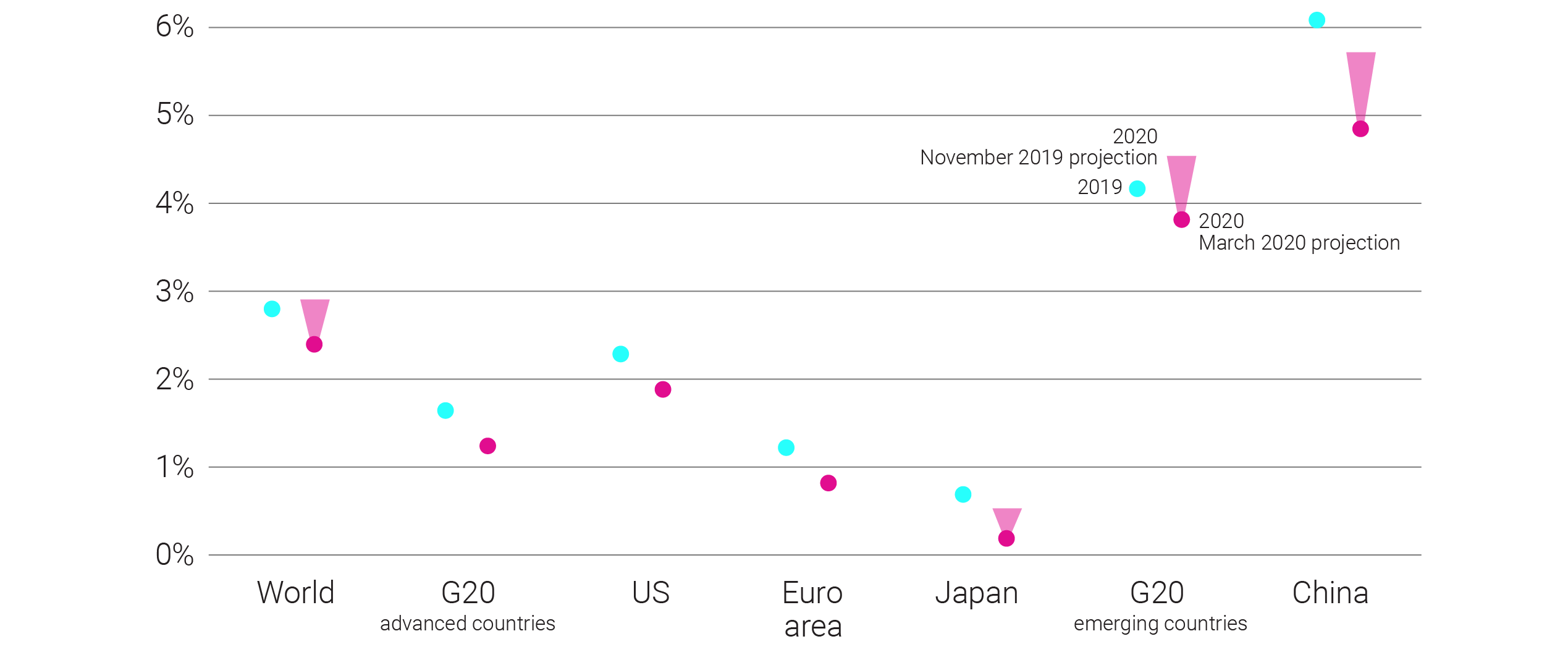
Source: OECD Economic Outlook database
GOVERNMENTAL RESPONSES
Limited or late containment
- Governments act late or do not act at all to reduce person-to-person interaction in-country.
- The spread of COVID-19 is exponential, resulting in widespread illness peaking in two to three months and leading to 60–80% of population becoming infected over the coming year.
- The chance of healthcare systems collapsing peaks. There is widespread self-isolation as people make their own decisions to avoid transmission.
- The economic impact is likely to be sharp and potentially catastrophic, because people are no longer able to work because of illness.
- Resolution is due to herd immunity through infection coupled by vaccination in 12–18 months.
Quarantine and encouraged social distancing
- Governments act early to reduce the spread through mandatory quarantines and encouraged social distancing for the entire population.
- Businesses are closed; working from home is recommended or required. Ideally, transmission is managed to match healthcare capacity.
- In moderate cases, disease spread is limited to linear rather than exponential growth. In strict cases, there is localized, temporary eradication.
- The economic impact is likely to be a strong reduction in local spending because of closed businesses and will be sustained as measures last for many months.
- Resolution is mostly achieved by herd immunity through vaccination with isolated instances of local eradication and long-term travel restrictions until vaccinations are available.
POTENTIAL CONSERQUENCES OF GOVERNMENT RESPONSE
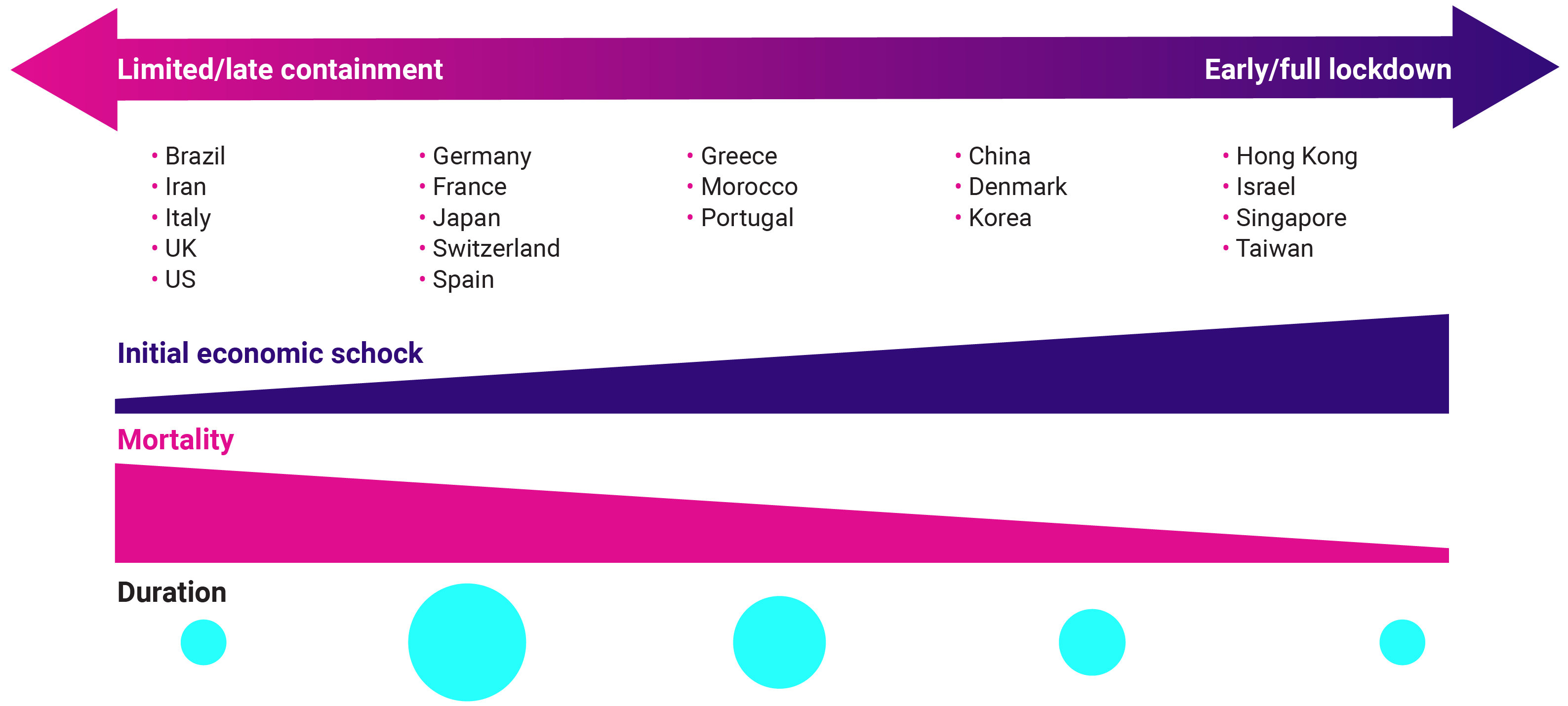
LIKELY RESOLUTION OF THE OUTBREAK AND RECESSIONARY PRESSURES
- The initial reaction from the market has been a rapid sell-off across all global stock markets. Containment measures in China and Europe have triggered huge dips in all markets.
- The endpoint for both realistic scenarios is herd immunization through vaccination, which experts predict will take 12–18 months. Before that, any location that is virus free will likely impose long-term travel restrictions, and any countries with containment measures will likely have to keep them for approximately the same duration to manage the spread.
- Agriculture and most digital industries will be least impacted. Pharmaceutical and some heavy industry will grow as they are mobilized to deal with the direct impact. Gaming, pay TV, and online video will likely grow as people are kept isolated. Retail, travel, automotive, and energy industries will be badly impacted by the slowdown in consumption.
Impact on stock markets since start of COVID-19 outbreak
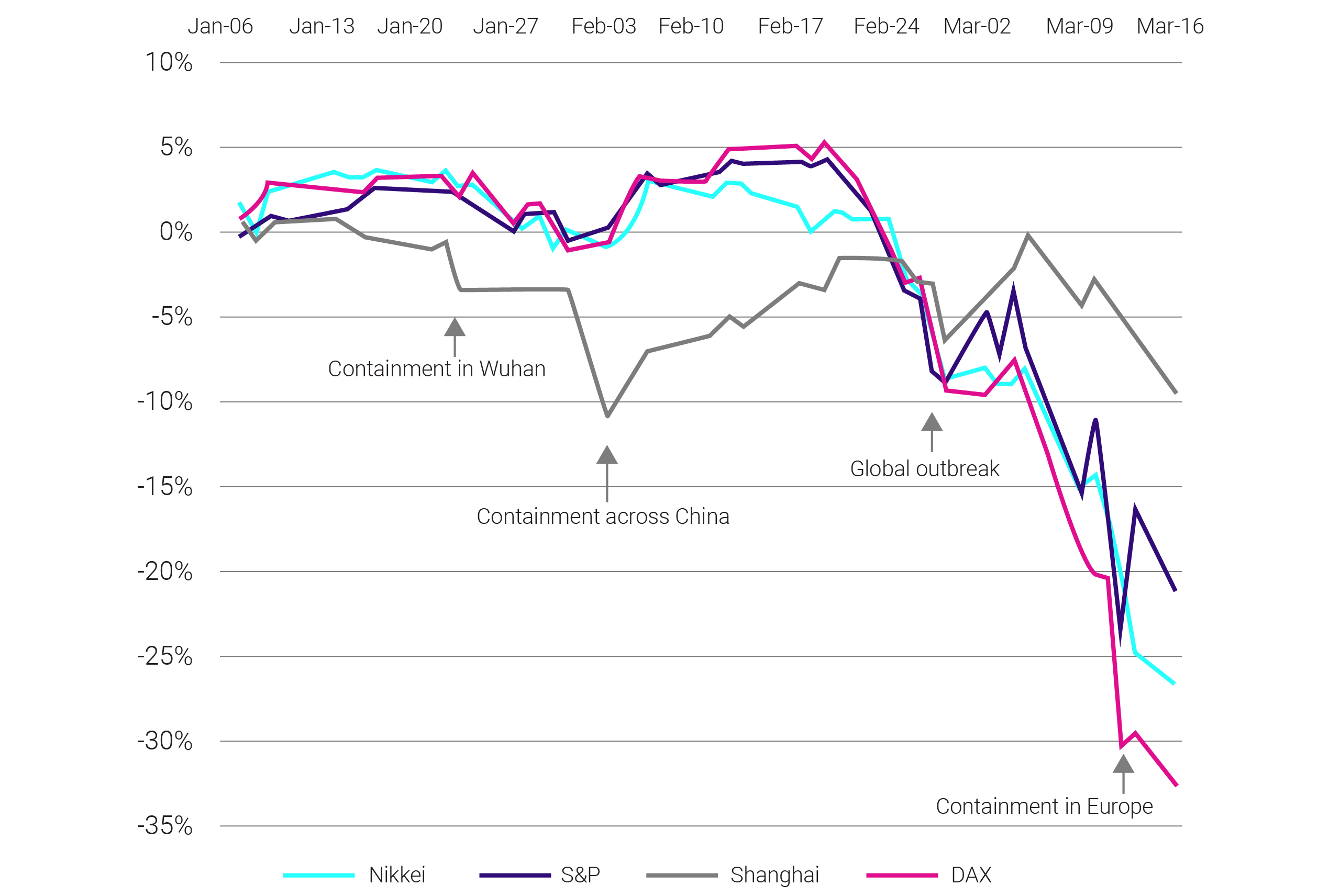
Source: Omdia

